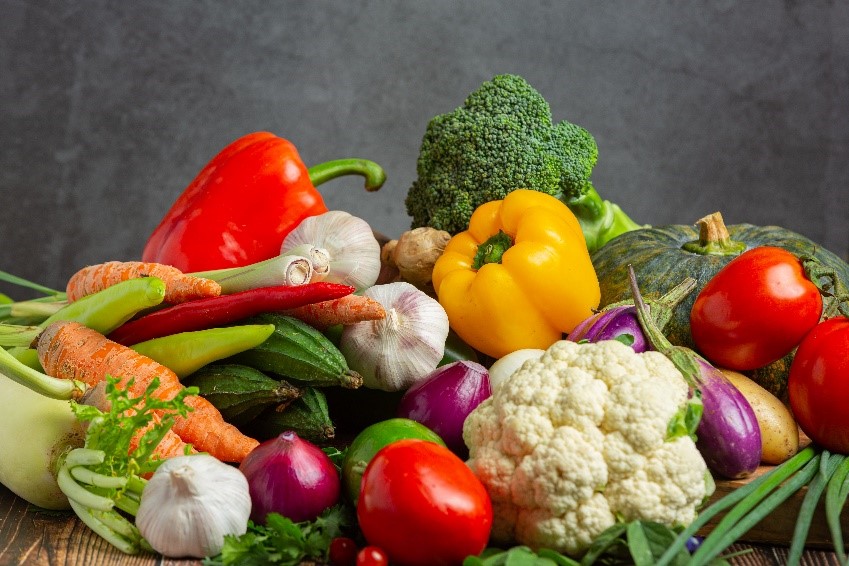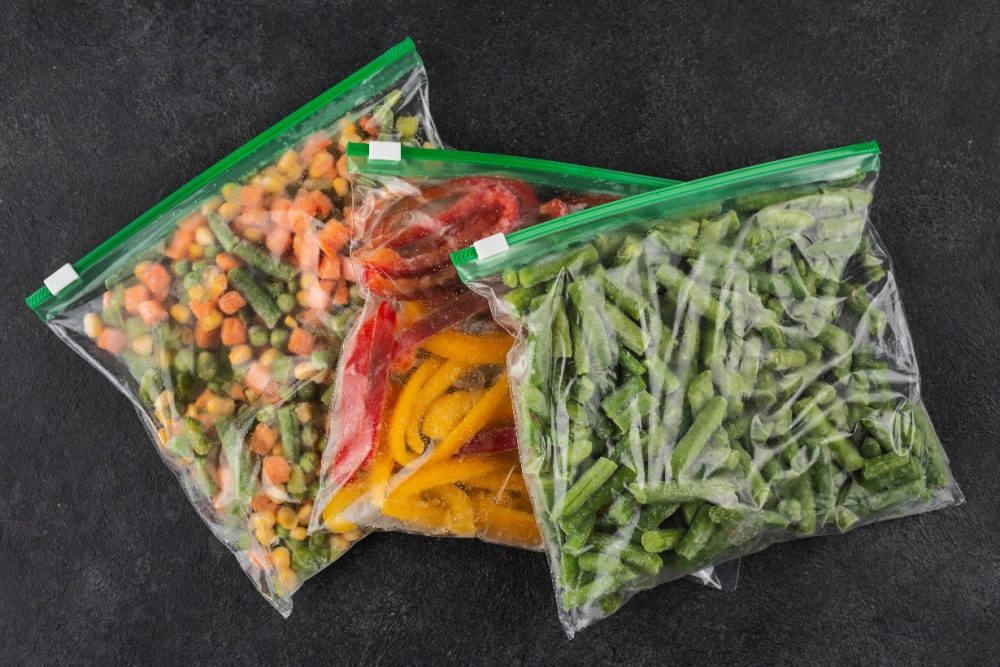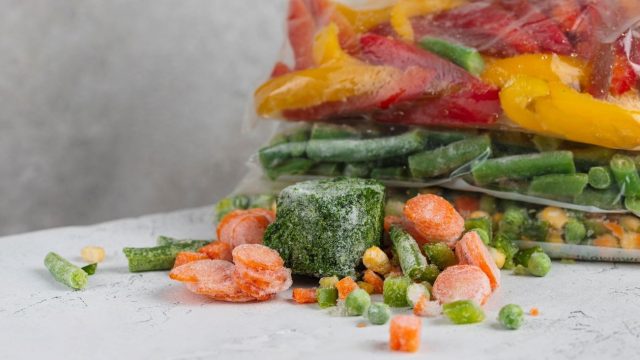Promoted by DagangHalal
How often have we heard the phrase “Eat your vegetables” or “Don’t forget to include fruits and vegetables in your diet”? I think we can all collectively agree that it’s a lot. It’s one of those golden rules implemented in every household, irrespective of geography or race and even lifestyle. It’s so much engrained into us that we’re taught to eat our greens even as toddlers.
The need to include fruits and vegetables into our diets, and even more so the never-ending search of sourcing Halal-based fruits and vegetables, has ultimately sparked the debate of what is the ideal choice; fresh or frozen fruits and vegetables, that has been raging on for the past few decades.
Patently speaking, frozen fruits and vegetables have continued to dominate the industry of protective foods, the common classification of all fruits and vegetables. However, fresh fruits and vegetables are not one to be tossed aside in haste as well.
When it comes to looking at fresh and frozen fruits and vegetables, it’s important to critically view each aspect between the two before making an informed decision. What exactly are the differences between the two fundamentally different processes? How do they ensure the quality of the produce?

1.Frozen Fruits & Vegetables
Fruits and vegetables for freezing are often selected at their peak maturity when they are the most nutritious. Within a few hours of being harvested, the veggies are frequently washed, blanched, sliced, frozen, and packaged.
Fruits are rarely blanched since it alters their texture significantly. To avoid spoilage, they can be treated with ascorbic acid, which is a variant of Vitamin C, or additional sugar. Before freezing, no chemicals are usually added to the produce.
In general, we are aware of the fact that freezing helps Halal-based frozen fruits preserve their nutritional value. However, we might overlook other aspects during the dehydration of fruits and vegetables, such as a series of quality changes that may occur. These changes include chemical changes such as browning, lipid oxidation and discolouration, physical changes such as rehydration, cracking, arrangement and loss of aroma and changes in nutrients.
Vegetables intended for commercial freezing are also picked at peak ripeness, but unlike fruit, they are blanched before freezing, in which they are exposed to hot water temperatures ranging from 90 to 95 degrees Fahrenheit, which destroys enzymes that cause discolouration, browning, and flavour loss.
A good example of this would be peppers. The dehydration of domestic hot peppers through-flow drying experiments, and the research on hot air drying characteristics of several vegetables such as chopped carrots, red dates, garnishes, and shiitake mushrooms, are proof of the significant role of heat in the freezing and preservation of Halal-based frozen fruits and vegetables.
During the blanching process, you can lose up to 50% of vitamin C, which is heat-sensitive and several nutrients are also lost. In fact, this is when the most nutrients are lost. Blanching occurs prior to freezing and entails immersing the produce in boiling water for a brief period of time – usually a few minutes.
This destroys any unwanted germs and prevents flavour, colour, and texture loss. However, it also causes a loss of water-soluble substances such as B vitamins and vitamin C. This does not apply to frozen fruits, which are not blanched.
Certain nutrients may be present in higher concentrations in frozen vegetables. This is especially typical in studies that compare frozen products to fresh produce stored at home for a few days. For example, frozen peas or spinach may have more vitamin C than fresh peas or spinach purchased at a supermarket and preserved at home for several days.
When compared to its fresh variants, flash freezing is said to have resulted in enhanced vitamin C content for various fruits. Furthermore, one study suggests that the freezing techniques used to preserve fresh fruit may boost fibre availability by making it more soluble.
2. Fresh Fruits & Vegetables
The majority of Halal-based fresh fruits and vegetables are selected before they are fully mature. This gives them enough time to fully develop while being transported. It also provides them less time to produce a full complement of vitamins, minerals, and natural antioxidants. Fruits and vegetables in the United States can spend anywhere from 3 days to several weeks in transit before arriving at a distribution centre.
However, according to the U.S. Department of Agriculture (USDA), some produce, such as apples and pears, can be stored under controlled circumstances for up to 12 months before being sold. Fresh food is typically maintained in a cold, controlled environment and treated with chemicals to avoid spoilage during transportation.
A Consumer’s Slant
Making the choice between buying Halal based frozen or fresh fruits and vegetables may look like a no-brainer but don’t be fooled by the implied, plain sailing decision making. A lot can go into deciding what works best for us and our family. Getting the best out of our grocery list can be tricky, but here are a few factors that buyers often look at before making a beeline to that cash register:
- Affordability – It is no secret that frozen fruits and vegetables tend to have the edge with the unpredictable highs and lows of pricing systems, especially with seasonal greens. Frozen vegetables like peas and corn, as well as freeze-dried fruits all are known to cost significantly less than their fresh counterparts, all the while allowing those with a limited budget to also have variety in their meals.

- Shelf Life – This right here, might just be the number 1 reason why frozen fruits and vegetables, and just frozen food in general is more preferred by shoppers – the extended shelf life that comes with freezing fruits and vegetables. Fruits and vegetables may spend an additional 1-3 days on display once they arrive at the grocer. They are then saved in people’s homes for up to seven days before being consumed.
Not having to worry about our leafy greens turning orange over time or forgetting about a pack of strawberries that have turned into a mush of slime, keeping things frozen offers us more time to work with what we have.
Planning for special occasions weeks ahead is also possible by quite simply freezing our greens as fruit and vegetables can be frozen for 8 to 12 months before they begin to deteriorate in quality.
- Nutritional Value – Contrary to popular belief, frozen can actually have an advantage over fresh when it comes to nutritional value and overall health properties. This is because, when fruits and vegetables are about to be frozen, they’re picked when at the peak state of freshness and quality and are frozen shortly after harvesting to preserve the nutritional quality and taste.
It is important to note, however, that this is also largely agreed upon according to multiple studies conducted over the years, including one from study author Ali Bouzari, who is a culinary scientist and author of ‘Ingredient: Unveiling the Essential Elements of Food’. Many other similar studies have also been undertaken to prove the argument, and all of them determined that the nutritious content of frozen and fresh vegetables is more of less the same (source: CNN News.com).
So in actuality, we’re probably better off buying frozen fruits and vegetables than trying to buy them fresh. It’s the more cost-efficient option, they lose minimal nutritional value during freezing and they taste pretty much the same.
How Do Businesses Ensure Continued Trust in Frozen Greens?
As the spark of this debate carried through over the years, the ones affected the most, business owners, have diligently been working behind the scenes to continuously provide trust and assurance over their frozen goods, down to the manufacturing process, inclusive but not limited to preservation methods and packaging materials.
1.Preservation Techniques: The technology of food preservation and freezing is also at an all-time high of needing to be efficient in both cost and usage, as well as effective. Here are a few food freezing and preservation methods commonly used by suppliers and wholesalers of frozen goods, including frozen fruits and vegetables:
- Flash Freezing – One of the most used ways of food preservation is flash freezing. Flash freezing with lower temperatures hastens the freezing process and makes the product retain its natural flavours, hence preserving the taste and texture.
This technology employs a pressurised brine and water solution to quickly freeze vegetables for transportation, enabling manufacturers to sell their frozen goods across the country.
- Tunnel Freezing – Tunnel freezing is a type of air-blast freezing in which food is placed on trolley racks and transported through a tunnel filled with cold air that is constantly pumped.
2.Packaging: It is vital for frozen food packaging such as frozen fruits and vegetables to remain intact during filling, sealing, freezing, storage, shipping, thawing, and, in some cases, cooking. With this in mind, manufacturers have devised packaging that can go directly from the freezer to the microwave or stove, to allow for easy and effortless cooking. These packages are made with some of the following materials enabling a secure manufacturing and storage process:
- Polyethylene (PE) Film – PE films have strong mechanical strength and can survive temperatures as low as -40°F, making it ideal for storing frozen greens and proteins as well.
- Polyethylene Terephthalate (PET) – This material can survive sudden temperature fluctuations and is commonly used in microwaveable or boil-in-the-bag items.

Most frozen foods can expand by up to 9% depending on their moisture content. As a result, the frozen food packing material must adapt to these changes. Furthermore, the container must be able to:
- Withstand freezing conditions of -40°F or -40°C
- Have a food package design that is visually appealing.
- Maintain the sealing, freezing, storing, and transportation operations, as well as the cooking pressure in some situations.
In a nutshell, it is safe to say that people have many misconceptions and misunderstandings when it comes to frozen fruits and vegetables. Despite what researchers and studies might propel us to think, it is important to recognise and identify the different eating habits and requirements of those within our own households. By knowing this, we can perpetually make informed and aware decisions when it comes to shopping for our daily dose of protective foods.
Frozen or not, both types of suits and vegetables are sure to serve their purpose of providing us with the amount of nutrients and vitamins that we need, and therefore focusing on a combination of both fresh and frozen foods can provide you with the benefits of both, including convenience, cost, and nutrition.
And finally, don’t forget to eat your vegetables.










